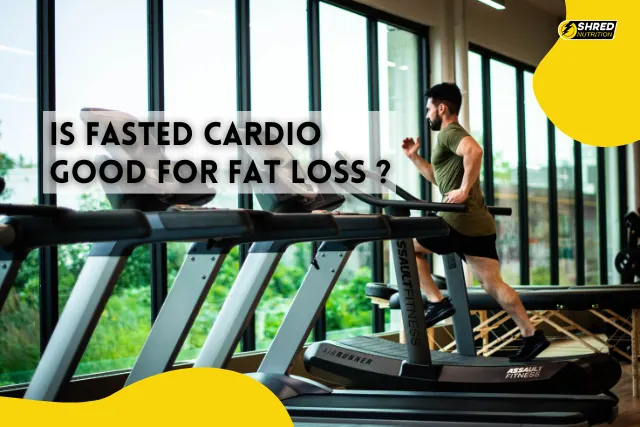When it comes to burning fat and achieving weight loss goals, fasted cardio is often mentioned as a powerful tool. But what exactly is fasted cardio, and is it really the secret weapon some claim it to be? In this article, we’ll dive deep into what fasted cardio involves, its potential benefits, safety considerations, risks, and guidelines for those who want to try it.
What is Fasted Cardio?
Fasted cardio refers to performing cardiovascular exercise after a period of fasting — typically 8–12 hours without eating, often first thing in the morning before breakfast. The idea is that when you work out in a fasted state, your body has lower glycogen (stored carbohydrate) levels, and may therefore turn more quickly to fat stores for energy.
Common forms of fasted cardio include:
- Brisk walking
- Jogging
- Cycling
- High-intensity interval training (HIIT)
- Swimming
The practice stems from the belief that exercising without prior food intake may enhance fat burning compared to exercising in a fed state.
Is Fasted Cardio Safe?
For most healthy individuals, fasted cardio is generally safe, especially if performed at a moderate intensity and for a reasonable duration (e.g., 30–60 minutes). However, there are some important safety considerations:
- Blood sugar levels may be lower after fasting, leading to dizziness, fatigue, or even fainting, particularly during high-intensity workouts.
- The risk of dehydration may be higher, especially if the fast also includes abstaining from water (such as during religious fasting periods).
- Reduced performance: Without immediate energy from food, some individuals might not be able to work out at their usual intensity, affecting overall performance and results.
Those with pre-existing health conditions like diabetes, low blood pressure, or eating disorders should consult a healthcare professional before attempting fasted cardio.
Are There Benefits to Fasted Cardio?
Several potential benefits make fasted cardio an attractive option for many fitness enthusiasts:
Enhanced Fat Oxidation
Studies suggest that fasted cardio can increase the body’s ability to oxidize (burn) fat during exercise. This is mainly because insulin levels are lower when fasted, which promotes fat mobilization.
Improved Metabolic Flexibility
Regularly exercising in a fasted state may improve the body’s ability to switch between using carbs and fats for fuel — a key factor in metabolic health.
Convenience
Fasted cardio eliminates the need for pre-workout meals, making it easier for people with busy schedules to fit in a workout early in the day.
Mental Toughness
Training without the comfort of a full stomach can build resilience and mental discipline.
Will Fasted Cardio Help Weight Loss?
Fasted cardio can contribute to weight loss, but it’s not a magic bullet. Here’s the truth:
- Calorie Deficit is Key: No matter when you exercise, weight loss ultimately depends on expending more calories than you consume.
- Fat Loss vs. Weight Loss: Fasted cardio may promote greater fat oxidation during exercise sessions, but the overall impact on body composition over weeks or months compared to fed-state training is still up for debate.
- Preservation of Lean Mass: Without adequate nutrition, fasted cardio may increase the risk of muscle breakdown (catabolism), especially during longer or more intense sessions.
For best results, fasted cardio should be part of an overall structured plan that includes strength training, proper nutrition, and adequate recovery.
What Are the Risks of Fasted Cardio?
While it can be beneficial, fasted cardio is not without risks:
Hypoglycemia
Exercising on an empty stomach can cause low blood sugar, leading to dizziness, shakiness, or fainting.
Loss of Muscle Mass
Especially during longer sessions or high-intensity workouts, the body may start breaking down muscle protein for energy.
Decreased Performance
Some individuals may experience reduced endurance, strength, and focus during their workouts when fasted.
Increased Stress Hormones
Fasted training can spike cortisol levels (the body’s stress hormone), which, over time, could lead to negative health effects if not managed properly.
Risk of Overtraining
If fasted cardio becomes excessive, it can lead to fatigue, burnout, or injury.
Who Should Avoid Fasted Cardio?
Fasted cardio is not suitable for everyone. Groups that should be cautious or avoid it include:
- Individuals with Diabetes or Blood Sugar Disorders: Risk of hypoglycemia is higher.
- Those with Eating Disorders: It may encourage unhealthy relationships with food and exercise.
- Pregnant Women: They have different energy and nutritional needs.
- People with Cardiovascular Conditions: Fasted exercise could place extra strain on the heart.
- Athletes in High-Intensity Training Programs: They may need maximum fuel for performance and recovery.
If you’re unsure whether fasted cardio is right for you, it’s always best to consult with a healthcare provider or certified fitness professional.
Guidelines for Fasted Cardio
If you decide to incorporate fasted cardio into your routine, follow these guidelines to do it safely and effectively:
Start with Low to Moderate Intensity
Choose lower-intensity activities like brisk walking or light jogging, especially when beginning.
Stay Hydrated
Always drink water before, during, and after your session to prevent dehydration.
Keep Sessions Short at First
Begin with 20–30 minutes and gradually increase if your body adapts well.
Consider BCAAs or Protein
If you’re concerned about muscle breakdown, sipping on branched-chain amino acids (BCAAs) before or during your workout can help preserve lean mass.
Listen to Your Body
Stop if you feel dizzy, weak, or overly fatigued.
Fuel Properly Afterward
Have a nutritious meal with a balance of carbs, protein, and healthy fats within 30–60 minutes post-workout to aid recovery.
Don’t Rely Solely on Fasted Cardio
Combine it with strength training, adequate rest, and proper nutrition for balanced fitness progress.
Conclusion
Fasted cardio can be a useful strategy for enhancing fat metabolism and supporting weight loss goals, but it is not a one-size-fits-all solution. While it offers some unique benefits, it also carries certain risks that should not be overlooked. If you choose to incorporate fasted cardio, do so mindfully, listen to your body’s signals, and prioritize your overall health above all.
Ultimately, the best approach to fitness and weight loss is the one that fits your lifestyle, preferences, and long-term sustainability.











